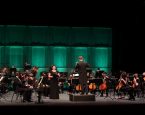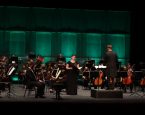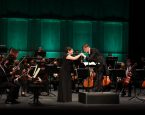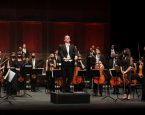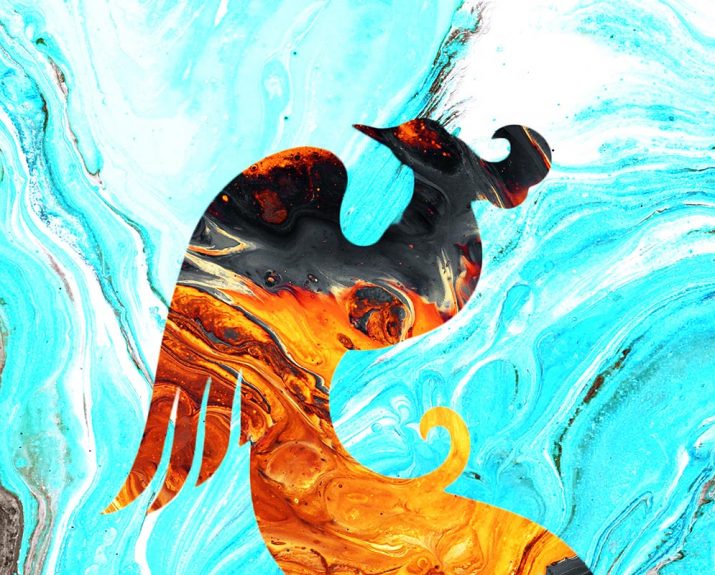
MAHLER, STRAVINSKY
As a whole, Mahler compared his Fourth Symphony, the most performed and atypically cheerful, to a simple painting with a gold background and thus described the finale: “When a man, in complete wonder, asks what this means, a child answers him with the fourth movement: This is the heavenly life”. The rich drama – song – symphony for soprano (which presents a child’s voice not at all pathetically) and orchestra is the last in a tetralogy known as “Wunderhorn Symphonies”, which contains quotes on themes and song elements from Das Knaben Wunderhorn (“The Boy’s Magic Horn”), an anthology of German folk poetry and folklore. Inventive in detail, archaic, solemn, extremely pure and simple, and joyfully innocent, Mahler’s Fourth Symphony brings voices from heaven itself.
As the youngest member of The Firebird’s creative team, Igor Stravinski later proved to have composed one of the cult masterpieces of the early 20th century. The 27-year-old composer, the same age as our chief conductor of the Rijeka Symphony Orchestra Valentin Egel, caused a sensation that catapulted him to international fame by presenting a century-old legend about the firebird. Though not the first choice of Diaghilev, the artistic director of the legendary Ballets Russes, who wanted a more famous, experienced name for this important job, Stravinsky left a key mark in ballet history “straight from the bench,” as one would say in sporting terms.
Program
Gustav Mahler (1860 – 1911): Symphony No. 4 in G Major
Bedächtig, nicht eilen (Moderately, not rushed) – sonata form
In gemächlicher Bewegung, ohne Hast (Leisurely moving, without haste) – scherzo and trio
Ruhevoll, poco adagio (Peacefully, somewhat slowly) – theme and variations
Sehr behaglich (Very comfortably) – strophic
* * *
Igor Stravinsky (1882. – 1971.): The Firebird Suite (1919)
Introduction – Danse de l’Oiseau de feu
Ronde des Princesses
Danse infernale du roi Kastchei
Berceuse
Finale
Note: Concert programs will depend on measures to protect against the coronavirus epidemic, which determine the possible or permissible composition of the orchestra.
How much of this work Mahler wrote in direct neighborhood to Rijeka is unclear. Several little towns in Austria also claim to be the place of birth to his “heavenly” symphony. Nevertheless it was in the period that he composed his Forth, that he frequently visited Opatija and it is definite that he must have carried the ideas to that beautiful piece when being here, where he was retreating from the stressful job of leading the Viennese opera-house.
The Fourth Symphony is a breakthrough and a conclusion at the same time. After having composed the first three symphonies which are all monumental but also didn’t lead to a big success in Mahler’s lifetime, the Forth is less voluptuous in terms of form, structure, length and orchestration. It concludes the cycle of the so called “Wunderhorn”-Symphonies – Mahler uses themes and quotes of his Lied-cycle “Des Knaben Wunderhorn” in all of his first four symphonies. And it is a breakthrough in terms of success. With this piece he finally landed a triumph and until this day the Fourth is his mostly played Symphony.
When working on this oeuvre, he called it a “Humoresque”. In deed in the overall lightness, in the occasional grotesque moments and in the general attitude of the two first and the last movement one can hear a lot of humor. But Mahler also takes us on a journey from earth to paradise. In the second movement, inspired by Hans Hohlbein’s woodcuts, Mahler makes us hear death himself playing the violin: the concertmaster has to play long solos on a separate violin. In order to get a strange and almost unpleasant sound, Mahler requires the player to tune that instrument a whole note higher than usual and adds completely uncommon dynamics. In the third movement we stand on the step to paradise but can also witness the earthly trouble. In this double-variation piece, the composer again and again quotes his Second Symphony, the “Resurrection” – we are in expectation to enter heaven and reflecting on life.
In the final movement, which is basically a copy of his Lied “The heavenly life” we have arrived in paradise and can listen to a childlike and from time to time ironic description of the utopian Garden of Eden. The whole movement alternates blissfully, at times delicately, between naivety and grotesque; letting us hear once again the humoristic element of the symphony. Finally, however, we arrive in pure atmosphere of piece. The last verse praises the unparalleled music of paradise. In the finest orchestration and an incredibly soft orchestral accompaniment of the singer the score gives us an idea about how Mahler must have imagined the perpetual tranquility of eternity.
We are inclined to believe that this comes from an inspiration that Gustav Mahler received in our direct neighborhood, the Opatija Riviera.
An unexpected success was the decision of the Ballets Russes to hire the unknown young Igor Stravinsky to write a new piece for their next journey to Paris in 1910. The first performance of The Firebird, was a huge sensation and immediately set the conditions for Stravinsky’s massive career. The ballet, which tells a colorful fairy tale story of a young prince rescuing a princess with the help of a magic bird from an evil wizard, stands musically at the door of the new century. It has both warm, full sound and expressive, thrilling colors and rhythms. With The Firebird Stravinsky starts what he will fullfill with Petroushka (1911) and The Rite of Spring (1913): an astonishing resurrection of the ballet-genre.


